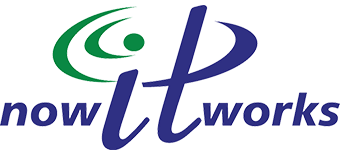There is a company I am trying to sign up right now. This company is using software called Fishbowl as its Enterprise Resource Planning tool. And even if you are not using Fishbowl, this story definitely applies to you.
This particular company is four revisions behind in updating the system and it has gotten to the point where none of the company’s employees trust the data within the system.
Unfortunately, this problem is all-too-familiar at most companies. It does not matter if its focus is in the financial or medical services or even if it is a non-profit business. Whatever the field, every company relies on one (or two or three) mission critical applications. It could be accounting software, ERP, Customer Relationship Management (CRM) software or a Business Operating System (BOS). These applications have a steady flow of questions, problems, issues – and most of these are tied to: education.
On our helpdesk, one of the biggest problems we see from our clients is a lack of maintaining those mission-critical software applications. And it is a problem that can be easily avoided.
This software is often MASSIVE in scale – meaning, many different functions that tie together. In your company, you need to have someone in the office who is the “champion” of this tool. They are the experts; the people that everyone goes to when they have a question. Let me give you an example from my own office:
In my office, our mission-critical software is called ConnectWise. Without it, my team would stumble around with nothing to do — I’m not kidding.
This quarter, I nominated an employee — Kaylena — to become the ConnectWise Administrator; an important role that focuses on introducing recent updates to our team, and managing the education side to new employees and new clients using the software.
Having a champion is one of three important implementations that need to be made to effectively manage your mission-critical software.
- Have a champion. This needs to be someone who is very involved in the tool, who knows how to use it better than anyone else. Send them away for training, certification, and consider sending them to the annual user conference that the vendor hosts.
- Manage updates. Don’t fall too far behind. If you do, you run the risk of the version not being supported by the developer anymore.
- Read the ReadMe notes. Every time a new release or update is pushed out; take the time to read what the new version has (and doesn’t have). Then spend time to understand how these can be used in your business – to upgrade automation and procedures.
- BONUS Implement the new features. I talk to a lot of folks about their mission-critical applications, and they do not take advantage of the new features. When ConnectWise comes out with their quarterly update, there are usually eight or nine new features. We do not take advantage of all of them, but we know what they are and implement the ones that make the most sense for us at the time.
- DOUBLE BONUS Create and update your procedures. Eventually, the way you are doing something now in the tool is going to change (automation, new features, etc.) – so keep your procedures up-to-date and accessible for the entire time. Remember the prospect who didn’t trust their data – don’t let that happen to you.
If you are want to nominate someone to be your software champion, or are just considering implementing one – reach out to me and I will show you how I can help make this a success.
